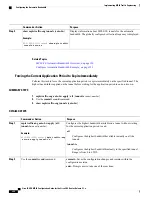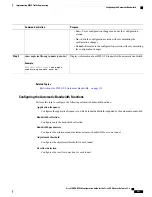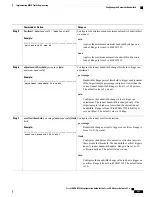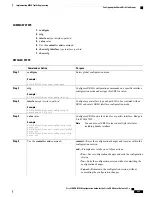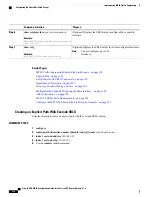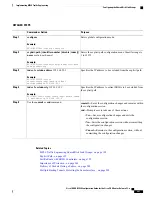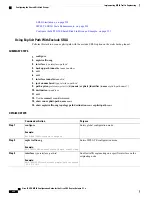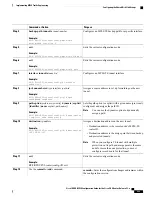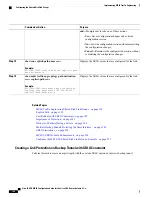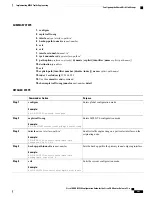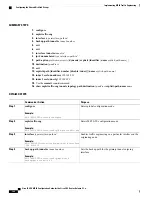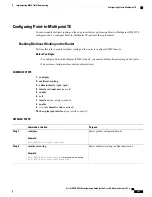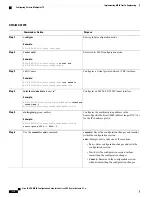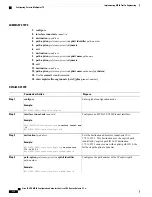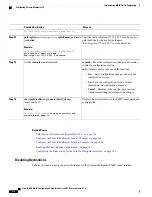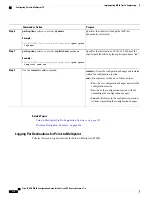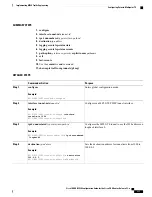
Purpose
Command or Action
Exits the current configuration mode.
exit
Example:
RP/0/RP0/CPU0:router(config-mpls-te)# exit
Step 6
Configures an MPLS-TE tunnel interface.
interface tunnel-tetunnel-id
Example:
RP/0/RP0/CPU0:router(config)# interface
tunnel-te 2
Step 7
Assigns a source address to set up forwarding on the new
tunnel.
ipv4 unnumbered type interface-path-id
Example:
RP/0/RP0/CPU0:router(config-if)# ipv4
unnumbered Loopback0
Step 8
Sets the path option to explicit with a given name (previously
configured) and assigns the path ID. Identifier range is from
1 to 4294967295.
path-option preference-priority
{
dynamic | explicit
{identifier | name explicit-path-name
}}
Example:
RP/0/RP0/CPU0:router(config-if)# path-option
1 explicit name backup-srlg
Step 9
You can use the dynamic option to dynamically
assign a path.
Note
Assigns a destination address on the new tunnel.
destination ip-address
Step 10
Example:
RP/0/RP0/CPU0:router(config-if)# destination
192.168.92.125
•
Destination address is the remote node
’
s MPLS-TE
router ID.
•
Destination address is the merge point between backup
and protected tunnels.
When you configure TE tunnel with multiple
protection on its path and merge point is the same
node for more than one protection, you must
configure record-route for that tunnel.
Note
Exits the current configuration mode.
exit
Example:
Step 11
RP/0/RP0/CPU0:router(config-if)# exit
Enters the explicit path configuration mode. Identifer range
is 1 to 65535.
explicit-path {identifier number [disable | index]}{
name explicit-path-name
}
Example:
RP/0/RP0/CPU0:router(config)# explicit-path
name backup-srlg-nodep
Step 12
Specifies the protected link IP address to get SRLGs to be
excluded from the explicit path.
index 1 exclude-srlg
192.168.92.2
Example:
RP/0/RP0/CPU0:router:router(config-if)# index
1 exclude-srlg 192.168.192.2
Step 13
Cisco IOS XR MPLS Configuration Guide for the Cisco CRS Router, Release 5.1.x
302
Implementing MPLS Traffic Engineering
Configuring the Shared Risk Link Groups



